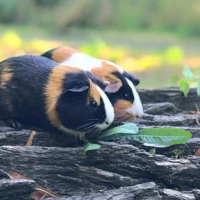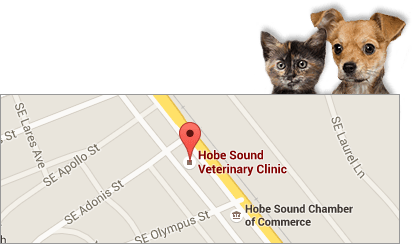Bringing a guinea pig into your home is an exciting and rewarding experience. These small, sociable creatures thrive when provided with the right environment, and choosing the perfect cage is a crucial first step in ensuring your cavy’s happiness and health. But with so many options on the market, how do you know which one is best? In this article, we’ll guide you through how to choose your guinea pig cage, covering essential factors like size, materials, and layout that can make a significant difference in your pet’s well-being. Evidence shows that the right cage not only enhances your guinea pig’s quality of life but also promotes natural behaviors and reduces stress. Whether you’re a first-time owner or looking to upgrade your current setup, we’ll provide clear, expert-backed advice to help you make an informed decision. Let’s embark on this journey to create the perfect home for your furry friend.
Did you know that America may have the most pet Guinea pigs of any country? According to research compiled by the AVMA in 2022, around 1.5 million US households have cavies. Of course, these tiny guys are extremely sociable and should always live with others. It’s likely that the majority of those households have at least two of these cute little furballs. This means there could be up to 3.8 million Guinea pigs in the United States. Guinea pigs are pretty easy keepers. In fact, making sure they have a great cage is over half the battle. In this post, a local Hobe Sound, FL veterinarian answers some typical queries about Guinea pig cage configuration.
What Is The Ideal Size Cage For A Guinea Pig?
That basically comes down to the number of guinea pigs you are planning to have. The Humane Society offers an official guide that you can follow. At the absolute least, one Guinea pig needs approximately 7.5 square feet of living space. However, you should never have just one Guinea pig. Cavies actually get quite depressed with no buddies! 10.5 square feet is preferable as a minimum for two. For three, at least 13 square feet is required. For four people, the minimum required size is 16 square feet.
Do Guinea Pigs Enjoy Multi-Level Cages?
When selecting a guinea pig cage, consider a multi-level design that prevents falls. Ensure the cage features enclosed ramps for safe and easy climbing, and check that upper levels are free of gaps or openings to protect your visually challenged pet. Choosing a well-designed habitat is vital for their safety and comfort.
Is It Okay To Let Guinea Pigs Run Around The House?
Living in a cage can be boring for an energetic tiny ball of fur. Guinea pigs need free time out of their cages. This is also a fantastic opportunity to play with and spend time with your cute pets.
Just be sure you petproof your space before letting your little one out to play. Guinea pigs have open-rooted teeth and will nibble on everything and anything within reach of their little paws. Many household items are dangerous to them.
The following are some of the issues you would like to address:
Small/Sharp Items
This includes pencils, safety pins, paper clips, miniature toys, rubber bands, jewelry, fishing tackle, and more.
Ropes/Cords
Smaller animals can easily become entangled in rope, string, or cord. Don’t forget about draping cords and tassels on blankets or pillows.
Toxic Plants
Many popular household plants are poisonous to pets. Some of these include the Lily, Daffodil, Oleander, Tulips, Amaryllis, Sago palm, Aloe, Rhododendron, Begonia, Chrysanthemum, Lilies of the Valley, Azalea, Ivy, Marijuana, and Iris. Make sure everything is safe for your little buddies.
Open/Dangerous Spaces
You should also block off any gaps behind and beneath furniture and cabinets. Other potential hazards include staircases, stoves, pools, and gaps beneath recliners. Also, make sure any vents are closed and that all doors, screens, and windows are secure and escape-proof.
Chemicals
Keep anything potentially harmful out of reach of those adorable paws. Cleaning agents, medications, drain openers, paint, pesticides, and automated items are all examples.
What Types of Cages Are Harmful to Guinea Pigs?
When deciding how to choose your guinea pig cage, it’s important to evaluate the array of options available in stores and online with a discerning eye. Not all cages are safe or suitable for your guinea pig. Plastic bins, for example, should be avoided as they lack proper ventilation. Similarly, glass cages are not advisable because they restrict airflow and can cause temperature fluctuations harmful to your pet. Cages with mesh or wire flooring are especially hazardous as they can lead to severe paw or leg injuries due to inadequate substrate support. Always consult with your veterinarian for personalized advice on the safest housing options for your guinea pig.
What Type Of Bedding Do I Require?
One of the most crucial selections you’ll make is the bedding to use. Dirty bedding will not only stink, but it can also harbor bacteria, increasing your pet’s chance of contracting respiratory and fungal infections. You want something that is safe, absorbent, quick-drying, and odor-free.
Avoid using wooden or paper bedding. Pine and cedar products are especially harmful since the oils they contain can cause respiratory problems in small animals. Fleece is a good alternative. Another thing you can try? Beach towels! These are particularly convenient because they can be washed and replaced easily. Furthermore, they come in a variety of vivid hues, making the cage more enjoyable for your pet. To make it softer, place a pad below. Use anything made expressly for pets to ensure it is not poisonous or otherwise dangerous.
Keeping the cage clean is also critical. We recommend spot cleaning daily. This includes getting rid of garbage and uneaten food, as well as changing filthy hay and padding. You’ll want to undertake a thorough cleaning once a week, which includes washing dishes, changing bedding and litter, and wiping down the cage. For more information, speak with your Hobe Sound, FL veterinarian.
How Do I Make My Pet’s Cage Interesting?
If you believe boredom isn’t a huge problem for pets, think again. Our canine friends, like humans, can become unhappy and sad if they are not stimulated and enriched. This can have an impact on the health and well-being of your pet. You should provide interesting toys and accessories.
Chew toys are absolutely necessary. To keep their teeth healthy, these little fellas have to chew a lot! You can actually make quite a few of your pet’s playthings yourself, out of ordinary household items such as paper and cardboard goods. Safety first, though! Ask your vet for more information on this.
Rearranging your pet’s cage frequently can add excitement and variety to your guinea pig’s environment. When exploring how to choose your guinea pig cage, consider incorporating accessories like cozies and solid exercise wheels to enhance your pet’s physical and mental well-being. Avoid wire wheels, as they pose safety risks to your guinea pig’s delicate feet.
Where Can I Place a Guinea Pig Cage?
The classic phrase “location, location, location” really applies here. Choosing the correct location is critical for your pet’s comfort, health, and happiness.
There are some things to remember, as well as some things to avoid. You should not place your pet’s cage in bright sunlight, a drafty area, or someplace that is too loud or busy. Guinea pigs are tiny and easily startled! Of course, your furry friends will not be pleased if they are too secluded. A quiet corner is usually your best bet.
You should also consider temperature. Guinea pigs are most comfortable in temperatures between 65 and 75 degrees Fahrenheit.
Last but not least, think about your other pets. If you have a dog or cat, place the cage on a strong table or something similar to keep Fido and Fluffy away. Your pint-sized pal won’t be very comfortable with a dog or cat peering in at them!
Consult your Hobe Sound, FL veterinarian for more information on how to care for your Guinea pig. We are pleased to assist you!
How to Choose Your Guinea Pig Cage in 2025: Understanding Housing Requirements and Pet Behavior
Why are rabbit hutches not suitable for guinea pigs?
Rabbit hutches typically aren’t suitable for guinea pigs due to their different needs. Guinea pigs require a solid floor, as wire or mesh floors common in rabbit hutches can lead to serious injuries like cuts and bumblefoot in guinea pigs. Furthermore, guinea pigs need more horizontal space to roam and explore safely, as they don’t climb like rabbits and may struggle or injure themselves with the higher platforms and ramps found in many rabbit-designed spaces. Therefore, a flat, spacious, and enclosed area suits guinea pigs best to prevent injuries and ensure comfort.
Why are guinea pigs more susceptible to heat stroke than dogs or cats?
Guinea pigs are more susceptible to heat stroke than dogs or cats due to their limited ability to regulate body temperature through traditional means like panting or sweating. These small animals primarily dissipate heat through their ears and, to a lesser extent, their feet, which is less efficient compared to the cooling mechanisms available to dogs and cats. Furthermore, guinea pigs have a higher resting body temperature, ranging from 99 to 103.1 degrees Fahrenheit, making them more prone to overheating, especially in environments that exceed their comfort zone of 65 to 75 degrees Fahrenheit.
How does humidity affect guinea pigs and why should certain rooms be avoided?
Humidity levels can significantly impact guinea pigs’ health, particularly their respiratory systems. High humidity promotes the growth of mold, mildew, and bacteria, which can lead to respiratory infections in these small animals. Therefore, it’s advisable to avoid placing guinea pig cages in damp areas like basements, bathrooms, or laundry rooms where humidity is typically higher. Additionally, sudden changes in humidity or temperature can stress guinea pigs, compromising their immune systems. Choosing a room with stable temperature and moderate humidity ensures a comfortable and healthy environment for these sensitive pets.
How does cage size affect the likelihood of peaceful coexistence among multiple guinea pigs?
Adequate cage size is vital for fostering peaceful coexistence among guinea pigs. These social animals require space not only for comfort but also to establish personal areas within the shared environment, which helps reduce stress and potential conflicts. The Humane Society recommends a minimum of 7.5 square feet for one guinea pig and 10.5 square feet for two, ensuring they have enough room to live harmoniously. Insufficient space can lead to aggression and health issues, as restricted areas limit their ability to engage in natural behaviors and interact positively with cage mates.
What are the activity patterns of guinea pigs throughout the day/night?
Guinea pigs are diurnal, meaning they are most active during the day. However, they do not follow strict activity schedules and tend to have multiple rest and active periods over a 24-hour span. These small pets often engage in shorter bursts of activity followed by resting phases, which can occur at any time, day or night. This pattern allows them to adapt well to various household environments, as they can adjust their active times to align with human interactions and care routines. It’s important to provide them with opportunities for exercise and play to support their health and well-being.
Schedule An Appointment At Our Hobe Sound, FL Pet Clinic
Do you have any queries about guinea pig care? Contact your nearest Hobe Sound, FL pet hospital right away! We are committed to providing outstanding care.





